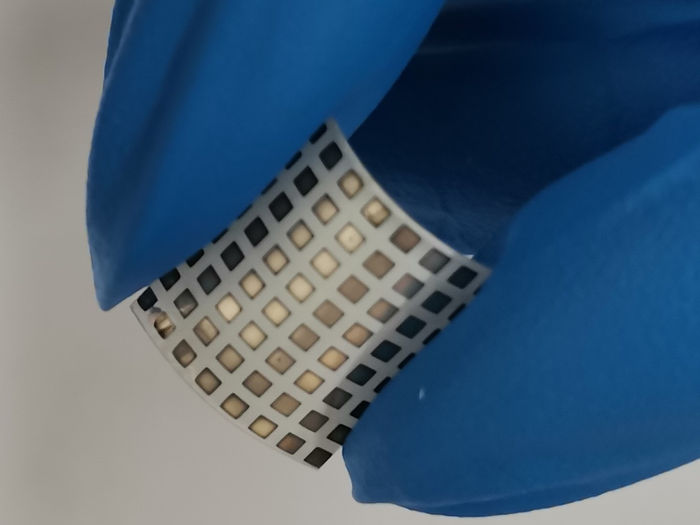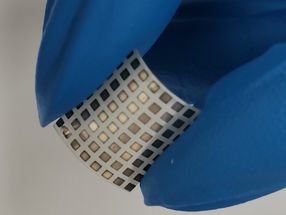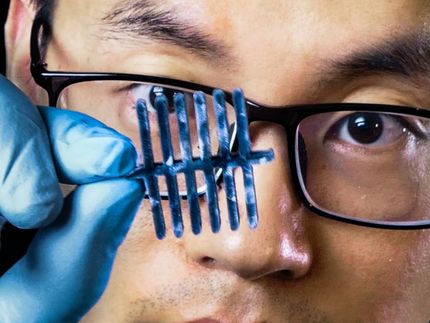Camels’ noses inspire a new humidity sensor
Device could reliably detect variations in humidity in settings that included industrial exhaust and the air surrounding human skin
Camels have a renowned ability to survive on little water. They are also adept at finding something to drink in the vast desert, using noses that are exquisite moisture detectors. In a new study in ACS Nano, researchers describe a humidity sensor inspired by the structure and properties of camels’ noses. In experiments, they found this device could reliably detect variations in humidity in settings that included industrial exhaust and the air surrounding human skin.

Symbolic image
pixabay.com

Inspired by camels’ noses, researchers have developed a tough and sensitive humidity sensor, held here between two gloved fingers.
Weiguo Huang and Jian Song


Humans sometimes need to determine the presence of moisture in the air but people aren’t quite as skilled as camels at sensing water with their noses. Instead, people must use devices to locate water in arid environments, or to identify leaks or analyze exhaust in industrial facilities. However, currently available sensors all have significant drawbacks. Some devices may be durable, for example, but have a low sensitivity to the presence of water. Meanwhile, sunlight can interfere with some highly sensitive detectors, making them difficult to use outdoors, for example. To devise a durable, intelligent sensor that can detect even low levels of airborne water molecules, Weiguo Huang, Jian Song, and their colleagues looked to camels’ noses.
Narrow, scroll-like passages within a camel’s nose create a large surface area, which is lined with water-absorbing mucus. To mimic the high-surface-area structure within the nose, the team created a porous polymer network. On it, they placed moisture-attracting molecules called zwitterions to simulate the property of mucus to change capacitance as humidity varies. In experiments, the device was durable and could monitor fluctuations in humidity in hot industrial exhaust, find the location of a water source and sense moisture emanating from the human body. Not only did the sensor respond to changes in a person’s skin perspiration as they exercised, it detected the presence of a human finger and could even follow its path in a V or L shape. This sensitivity suggests that the device could become the basis for a touchless interface through which someone could communicate with a computer, according to the researchers. What’s more, the sensor’s electrical response to moisture can be tuned or adjusted, much like the signals sent out by human neurons — potentially allowing it to learn via artificial intelligence, they say.
Original publication
Other news from the department science

Get the analytics and lab tech industry in your inbox
By submitting this form you agree that LUMITOS AG will send you the newsletter(s) selected above by email. Your data will not be passed on to third parties. Your data will be stored and processed in accordance with our data protection regulations. LUMITOS may contact you by email for the purpose of advertising or market and opinion surveys. You can revoke your consent at any time without giving reasons to LUMITOS AG, Ernst-Augustin-Str. 2, 12489 Berlin, Germany or by e-mail at revoke@lumitos.com with effect for the future. In addition, each email contains a link to unsubscribe from the corresponding newsletter.





















































